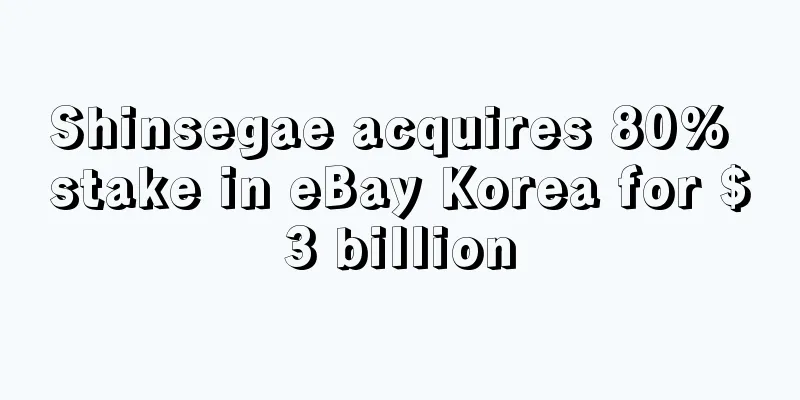With explosive growth, this category on Shopee will continue to sell well!

|
Shopee expands into Southeast Asia beauty and skincare market Recently, foreign media reported that Southeast Asian e-commerce giant Shopee signed a cooperation agreement with Amorepacific. As a well-known Korean cosmetics group, Shopee ’s cooperation with Amorepacific can not only promote the development of the Korean beauty industry, but also attract more Southeast Asian consumers. Previous data showed that since Amorepacific was launched on Shopee Mall in 2018, the total value of its merchandise has increased by more than 13 times, and its e-commerce performance in Southeast Asia in 2020 has doubled . The growth was mainly driven by Southeast Asian consumers’ preference for skin care products made with unique natural ingredient formulas and personalized beauty solutions, Shopee and Amorepacific said in a joint statement . Moreover, beauty and skin care products have always performed well on Shopee. During the Double Eleven and Double Twelve promotions in 2020, beauty and skin care products were on Shopee's best-selling list , which shows the strong demand for such products among Southeast Asian consumers. During the epidemic, Shopee's beauty and skin care categories experienced explosive growth in major markets in Southeast Asia , and its cooperation with Amorepacific also attracted the attention of many sellers to the Southeast Asian beauty and skin care market. Halal cosmetics market size grows rapidly Take halal cosmetics, which are particularly popular among Southeast Asian consumers, as an example. Due to religious beliefs, such products are widely used in the daily lives of Muslim consumers. In 2019, Southeast Asia dominated the halal cosmetics market in the Asia-Pacific region, accounting for about 61.8% of the market share , among which Indonesia became the main market for halal cosmetics. Halal cosmetics are expected to grow significantly in Southeast Asia due to the increase in Muslim population in countries such as Indonesia, Malaysia, and Singapore, the development of e-commerce, the steady growth in Southeast Asian consumers’ spending on personal care products, and the surging demand for eco-friendly cosmetics. Of course, the market size of halal cosmetics is not only shocking in Southeast Asia, but also globally. Data shows that the global halal cosmetics market size was estimated at US$22.5 billion in 2019 and is expected to reach US$80 billion by 2030. Many product manufacturers have also keenly sensed the growing trend of such products and are working to create halal cosmetics for a global consumer base. It is worth noting that the target consumer groups for such products are mainly young people and female customers. Sellers can also seize the unique needs of Southeast Asian consumers for beauty and skin care products to create popular products. Shopee Platform Cross-border e-commerce market Southeast Asia |
<<: U.S. retail sales increased across the board, with these products benefiting the most
>>: Online GMV reaches $39.2 billion, Canadian e-commerce is booming
Recommend
Shopify announced a massive layoff of 1,000 people, CEO: I was wrong...
On July 26, Canadian e-commerce platform Shopify ...
UK hairdressing product sales increased by 650%, while clothing market share decreased
According to a recent foreign media statistic, th...
This children's product was recalled due to excessive chemical content. Sellers of similar products should be vigilant
Watercolor pens are essential painting tools for ...
The financing wave is on the rise again, Amazon's third-party brand acquisition company D1 received 123 million in financing
Recently, D1 Brands, an Amazon third-party brand ...
Tmall Global releases new strategy for 2023: good products at good prices, import content upgrade
The restart of outbound tourism is bringing new o...
What is Harbin E-Trade Technology Co., Ltd.? Harbin E-Trade Technology Co., Ltd. Review, Features
Harbin Russia Express Technology and Trade Co., L...
Amazon adds “price comparison” feature to help sellers win the Buy Box
It is understood that Amazon recently announced t...
OnBuy relocates its headquarters to accelerate market expansion
OnBuy is set to relocate its headquarters , which...
Amazon adds four new certifications to sustainable labeling program
July 17th news, according to foreign media report...
U.S. retail spending jumps nearly 16% in 2021, Amazon still ranks first
According to the latest forecast, despite many un...
What is G-Business Extractor? G-Business Extractor Review, Features
G-Business Extractor is an innovative program tha...
The transformation almost killed the company, but it sold well: It is not necessary to make high-quality products
In recent years, the cross-border e-commerce inde...
What is Atoms? Atoms Review, Features
Atoms has created a must-have shoe with supreme co...
What is Giveaway Service
Giveaway Services is a platform that connects bra...
Etsy takes steps to combat shipment delays
Etsy recently said that it will continue to learn...









